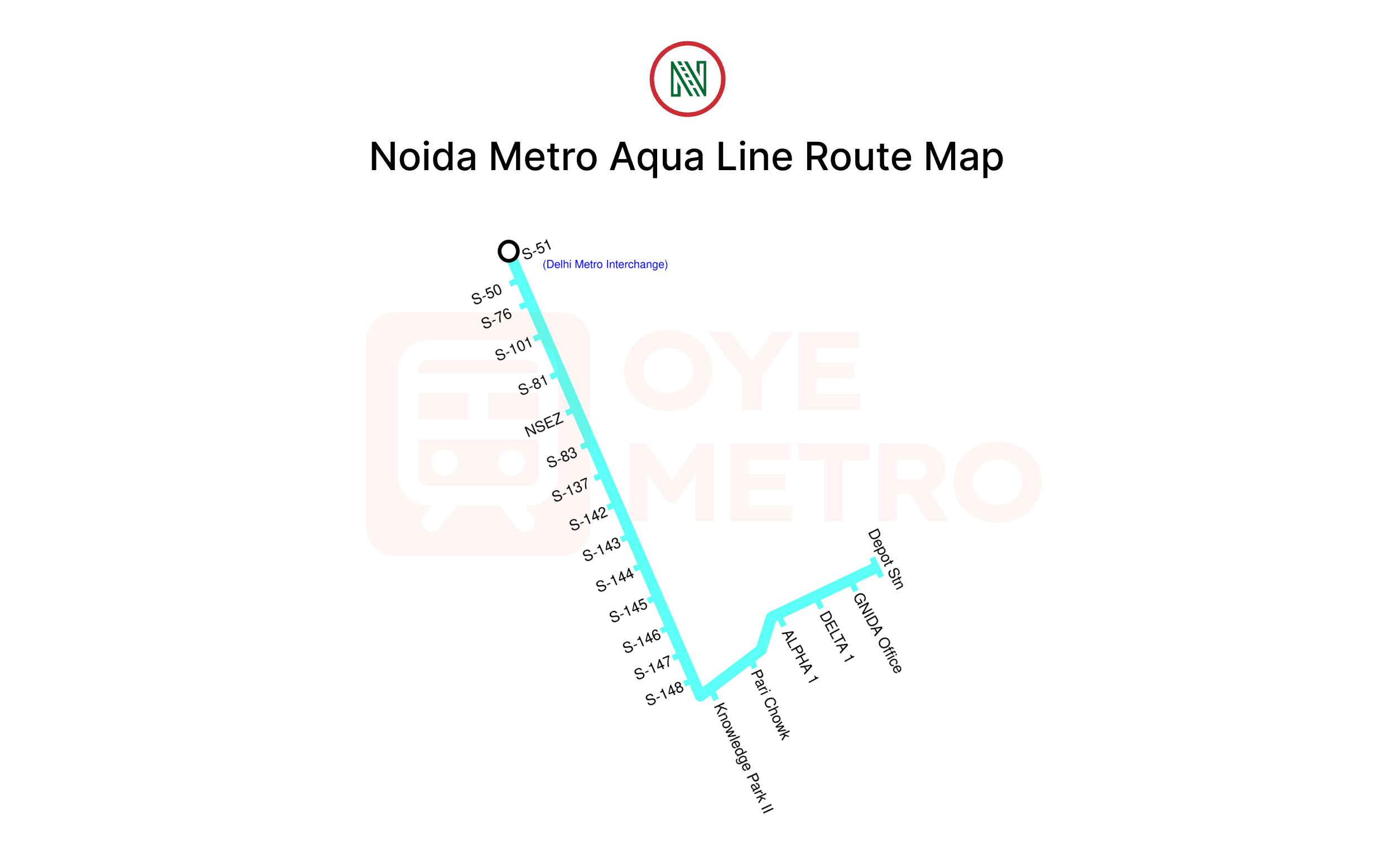 noida metro
noida metro
noida metro aqua line Route Map
The Aqua Line is a metro line of the noida metro, a rapid transit system in Delhi, India. It consists of 21 active stations of all noida metro network and operated by Delhi Metro Rail Corporation (DMRC). Explore noida metro Aqua Line route details like stations list, route map, interchange, fares, time and distance between source and destination, and top attractions nearby etc.
Sign: 🚆 Elevated, 🚇 Underground, 🚝 At Grade, 🅿️ Parking
Metro Lines
Noida Metro Aqua Line Details
Metro Map
Network Map
Interesting facts about noida metro Aqua Line
- Opening Date: 25 January 2019
- Length: Approximately 29.7 km
- Stations: 21, from Sector 51 in Noida to the depot in Greater Noida
- Interchange: Noida Sector 52 station with the Delhi Metro
- Trainsets: Initially 19 four-coach trainsets by CRRC Nanjing Puzhen, later expanded to 22 trainsets
Metro News
8 September, 2025
Patna Metro completed its first trial run on the elevated track from Patna Depot to Bhootnath Metro Station, covering 4.5 km through ISBT, Zero Mile, and Bhootnath stations. The fitness trial was conducted at low speed for safety.
8 September, 2025
Chennai Metro will conduct rail grinding work on the Green and Blue Lines from September 9 to October 19, 2025. Between 5:00–6:30 am, trains will run every 14 minutes instead of 7, after which normal services will resume.
9 September, 2025
Bengaluru Metro’s Yellow Line will run every 19 minutes from September 10, improving from the earlier 25-minute gap. Train services will start at 6 am (Mon–Sat) and 7 am (Sun), with last trains at 11.55 pm from RV Road and 10.42 pm from Bommasandra, as per BMRCL.
